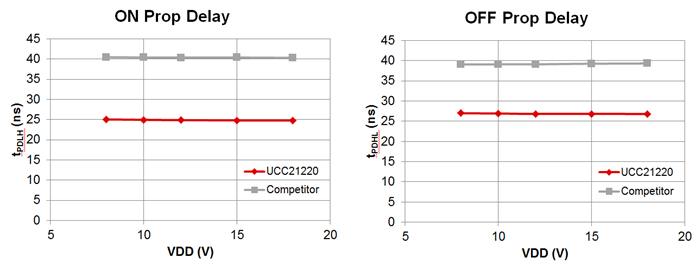SSZT707 may 2018 UCC21220 , UCC21222
With summer upon us here in the U.S., I’m already thinking about beach days and poolside BBQs. Growing up in South Florida and currently living in Texas, I’m very familiar with hot and sunny days. Similarly, I’ve gotten used to receiving higher electricity bills during this time of the year. On the bright side, sunny days also bring a lot of benefits to the table, one of them being solar energy.
Solar energy helps reduce the cost associated with generating electricity; one of the hottest topics in this industry is power conversion efficiency. Solar inverter manufacturers invest a lot of time trying to achieve even 0.1% higher efficiency. Determining how well an inverter converts the DC electricity from solar panels to the AC electricity used in homes is essential because higher efficiency correlates to increased energy generation, which translates to a faster return on investment of photovoltaic (PV) systems.
The microinverter and solar power optimizer are two rapidly growing architectures in the solar market. Figure 1 is a typical block diagram of a solar microinverter that converts power from a single PV module and is typically designed for maximum output power ranging from 250W to 400W.
 Figure 1 Typical Solar
Microinverter
Figure 1 Typical Solar
MicroinverterTo maximize PV panel performance, the front end of the microinverter is a DC/DC stage, where a digital controller performs maximum power point tracking (MPPT). The most common topology is a nonisolated DC/DC boost converter. From a single solar panel, the rail or DC link is typically 36V; for this voltage range, you can use standard silicon metal-oxide semiconductor field-effect transistors (MOSFETs) for DC/DC conversion.
Given that reduced size is a priority (so that microinverters and power optimizers will fit in the back end of a PV system); solar inverter manufactures are adopting gallium nitride (GaN) technology because of its ability to switch at higher frequencies. The higher frequency reduces the size of large magnetics in microinverter and solar power optimizer applications.
The DC/AC stage, or secondary stage, typically uses an H-bridge topology; the rail voltages are in the order of 400V for microinverters. Several isolation technologies designed to isolate the controller from the power switch and drive high-frequency switches at the same time are available today for gate drivers. These requirements are driven by safety standards for signal isolation.
TI’s UCC21220 basic isolated gate driver improves on these integration benefits by providing leading performance for propagation delay and delay matching between the high side and low side. These timing characteristics reduce losses associated with the switch since it turns on faster, while also minimizing the conduction time of the body diode, which in return improves efficiency. These parameters are also less dependent on VDD, so you can relax the design margin for voltage tolerances in the rest of the system, as the bench data in Figure 2 shows. Figure 2 also shows that the UCC21220 provides faster propagation delay than a competitor.
 Figure 2 TI’s UCC21220 Propagation
Rise/fall Delay with Respect to VDD vs. a Competitor
Figure 2 TI’s UCC21220 Propagation
Rise/fall Delay with Respect to VDD vs. a CompetitorThe UCC21220 provides an alternative to solar applications such as microinverters and solar power optimizers where basic isolation is likely to be sufficient. Using second-generation capacitive isolation technology to reduce costs via die shrink, the UCC21220 not only helps boost efficiency by providing 28ns typical propagation delay, but also reduces printed circuit board (PCB) space and system cost.
TI’s GaN technology enables the DC/DC boost and DC/AC inverter stages to operate in excess of 100kHz. The inherent low switching losses of GaN power stages make it possible to reach efficiencies of 99% and higher.
Higher efficiencies not only mean less energy wasted, but also translate to smaller heat sinks, less need for cooling, and designs that are more compact and cost-effective. Using the right high-voltage gate drivers can help you achieve higher efficiency while reducing system cost in your space-constrained microinverter or solar power optimizer designs.
Additional Resources
- Download these white papers:
- Read the blog post, “Making a solar inverter more reliable than the sun.”
- Start designing a grid-tied solar microinverter with MPPT.